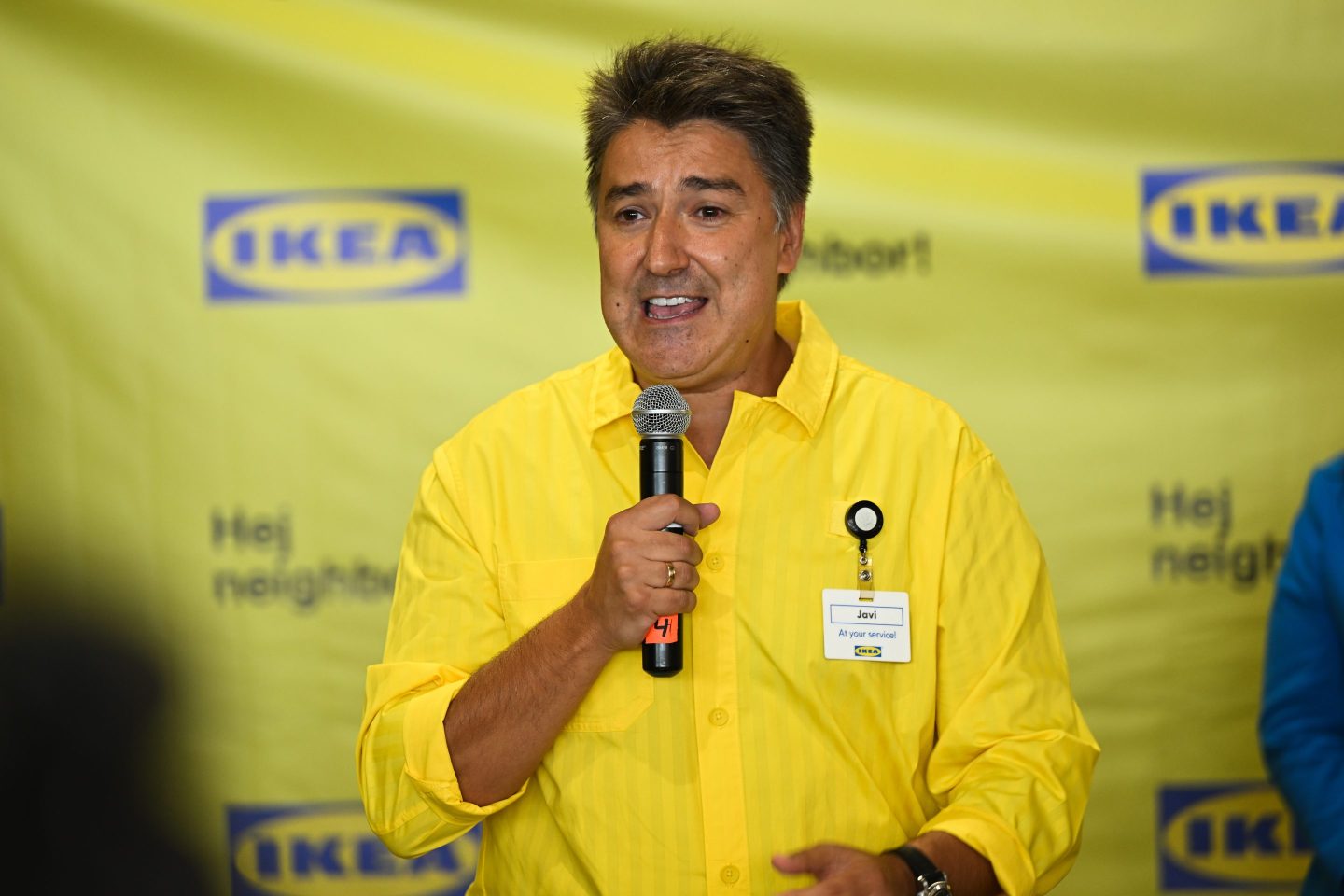IKEA is firmly etched into the minds of U.S. consumers with its mammoth, suburban big box stores, instantly recognizable along highways with their navy blue exteriors bearing the retailer’s name in gigantic yellow letters. Its relatively affordable self-assembled furniture, with its tough-to-pronounce names and countless umlauts, and its iconic meatballs have made the Swedish retailer an American fixture since it opened its first store here in 1985, outside Philadelphia.
But IKEA, whose stores tend to be on the outskirts of larger, more affluent cities, remains a relatively small U.S. furniture retailer and one truly well known by only a narrow sliver of the U.S. population four decades after entering this market. Last year, it took in $5.5 billion in sales, much less than rivals like Wayfair and about as much as West Elm and Pottery Barn put together. That’s a tiny fraction of the $253 billion home furnishing market.
“It’s curious. After 40 years, there are still pockets in the U.S., where, yes, everyone knows the name ‘IKEA,’ but to have been in contact with the brand is not that common,” IKEA U.S. CEO Javier Quiñones tells Fortune in an interview. “That’s why we need to be more present, and we will be.”
Adding to the challenge of doing this, however, is the arrival of new Trump administration tariffs of up to 50% on imported furniture beginning today, Oct. 1. Quiñones spoke to Fortune before the tariffs were announced, but in an e-mail since then said, “We are always striving to make our products more affordable for our customers, particularly those on a tight budget. At this time, we are still determining how the new tariff announcement on cabinets will impact IKEA.” On Tuesday, IKEA said that its cabinet frames and shelves sold in the U.S. are sourced stateside.
Smaller IKEA stores everywhere
So how will IKEA use reach Quiñones’ goal of making IKEA a household name across the United States? As of now, IKEA has 54 of those big-box stores—and the retailer has no new U.S. big-box stores planned. (As a point of comparison, the Home Depot has some 2,000 U.S. stores.) IKEA stores are typically 300,000 square feet in size, or twice the size of a Macy’s.
Quiñones’s plan to expand the brand’s reach involves opening smaller locations to complement those hulking big boxes, and a partnership with another major retailer that sports blue and yellow in its logo, Best Buy.
The smaller stores, part of a broad $2 billion plan announced in 2023, will be focused more narrowly on kitchen remodels, with advisors at the ready, and the ability to order many items across categories at those locations or pick them up there. (These are not locations where you can just pop in to grab a set of place mats or a reading lamp.)
IKEA U.S. currently has 16 such locations, often in suburban strip mills like the one in Cherry Hill, N.J., with three more coming on line in the coming months in Dallas, Phoenix, and Syracuse, N.Y. At around 5,000 square feet each, they are a very different shopping experience from the big boxes, with their signature model rooms and self-service warehouse shelves. The new, smaller stores are essentially showrooms for design consultations, after which customers can order the items selected.

“We are adding these smaller formats closer to where people are,” Quiñones said. “We’ve tested everything and it’s confirmed: This is the way forward.”
An IKEA inside a Best Buy?
And IKEA is testing going even smaller: A few weeks ago, IKEA announced a pilot to set up 1,000 square-foot shops focused on kitchens and laundry rooms at tenBest Buy stores. “How do we bring IKEA closer to the people?” Quiñones said the brand asked itself. Best Buy seemed a good partner, he added, because “They have many locations where we are not present.” For Best Buy, having IKEA mini-shops within its stores follows its long tradition of hosting other brands including Microsoft, Google and Nest.
Unlike some of its competitors, IKEA remains largely reliant on the physical retail experience. Rivals like West Elm and Crate and Barrel now get more than half their revenue from online sales. IKEA U.S. only does some 35% of its sales online—but that is triple the rate it boasted when Quiñones became CEO in 2019.
These smaller locations, along with the big box stores, are meant to support the growth of IKEA’s e-commerce business, serving as shipping and pickup nodes in IKEA’s order fulfillment network. Not long ago, the company had just one large facility to handle online orders for the country, but these smaller stores are creating a network that is speeding up delivery.
A pinched U.S. furniture buyer
In August, the CEOs of both Home Depot and Lowe’s said some customers were pulling back on big home improvement projects like kitchen renovations in this uncertain environment, stoking worries of that trend trickling down and hurting demand for furniture. Indeed, IKEA last year cut prices on hundreds of items in the U.S.
At the same time, IKEA’s relatively modest prices are attracting people in search of more affordable alternatives for kitchen cabinets and storage systems. Quiñones is betting that IKEA’s focus on sustainability and waste reduction, not just in how it makes its products, but in the efficiencies they offer customers, will lure more customers focused on saving money amid inflation and an uncertain economy. “If you store food in the right way in your fridge, you can save a lot of food by the end of the year,” he adds. “If you change your light bulbs to LED, you will reduce your electricity bill.”
But to attract these frugal customers, IKEA has to introduce them to the brand, and offer them a nearby store. “We want to be closer to where people are,” he says.
returns Oct. 26–27, 2025 in Riyadh. CEOs and global leaders will gather for a dynamic, invitation-only event shaping the future of business.
Apply for an invitation.
